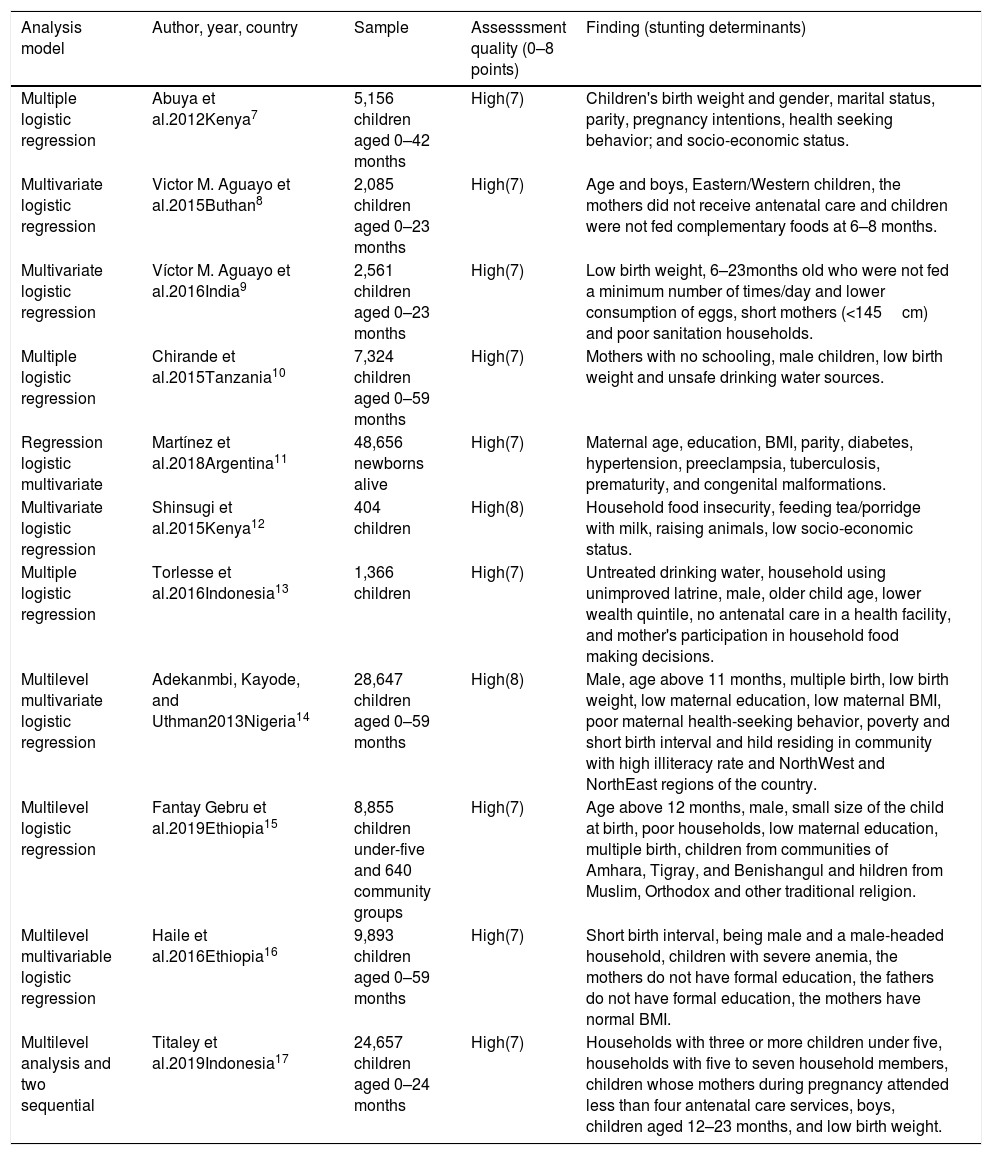This study aimed to determine the factors associated with stunting base on modeling inferential analysis.
MethodsThis systematic review was conducted using the 2015 Preferred Reporting Items for Systematic reviews and Meta-Analysis (PRISMA) guidelines. The computerized bibliographic databases searched were Scopus, PubMed, and Google Schoolar. The included studies were rated using eight quality-appraisal criteria derived from the Strengthening the Reporting of Observational studies in Epidemiology (STROBE) checklist: sample size, sampling methodology, response rate, outcome measures, statistical analyses, control for confounding, study limitation, and ethical consideration. As many as 12 of 5690 articles met our inclusion criteria for review.
ResultsThe most consistent factors associated with childhood stunting were: low mother's education, increasing child's age, male sex, poor household, prolonged breastfeeding duration, low birth weight, mother's age (<20 years), drinking water source (unimproved), low mother's BMI (<18.5), diarrhoeal episode, low father's education and residence (rural).
ConclusionThe factors that predispose a child to stunting are multifactors. Various factors causing stunting on children can be avoided through a holistic multi-strategy community-based approach.








